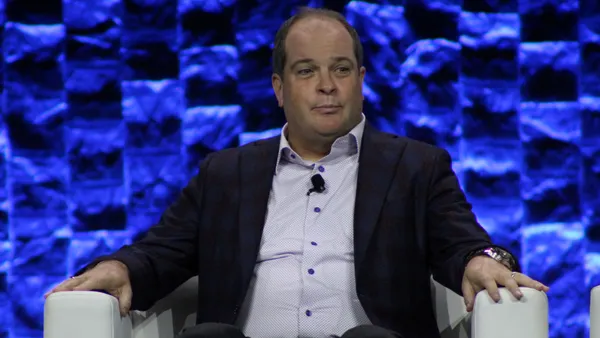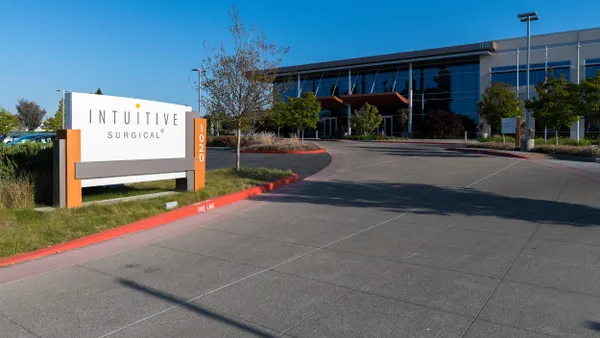Dive Brief:
-
TransEnterix laid off 18% of its workforce in a bid to restructure during the third quarter and acknowledged missteps in its commercial strategy to investors during an earnings call Tuesday. The company, which is running out of cash, says it can maintain business into early 2020 with cost cutting measures.
-
New TransEnterix CEO Anthony Fernando detailed plans to focus less on selling new robotic surgery systems and more on its existing customers. Last Friday, the company announced Fernando would take over as its chief executive, replacing former CEO Todd Pope, who will remain as a senior advisor to assist with the transition.
-
The pivot follows three quarters in which TransEnterix has consistently missed expectations, selling three systems across the first nine months of the year.
Dive Insight:
TransEnterix primed investors to expect another quarter of minimal commercial activity last month when it revealed it had sold one Senhance system over the previous three months. The prior release of interim results means the fiscal aspects of the third quarter financials are as expected. All the key new details relate to what TransEnterix is doing to turn the business around.
Responsibility for the turnaround will fall on Fernando, an ex-Stryker employee who stepped up from chief operating officer to the top job last week. Fernando inherited a slimmed-down organization. TransEnterix used the third quarter results to share details of the restructuring it teased last month.
"These efforts resulted in a reduction in force of 39 employees or 18% of total global headcount. These reductions in force were primarily focused in our field sales organizations as we are shifting our investments toward more market development activities," Joseph Slattery, TransEnterix's outgoing chief financial officer, said on a conference call with investors.
Fernando also provided more details of the shift from sales to market development. While TransEnterix will still try to sell Senhance systems, it will spend more time and energy working to increase use at existing sites. The goal is to turn low-volume users into advocates for the Senhance system.
In parallel, TransEnterix plans to gather real-world evidence of the value of Senhance and expand the range of software and instruments available for use with the system. TransEnterix also wants to get Senhance cleared for use in new indications.
The strategy reflects Fernando's perceptions of what went wrong with the Senhance launch.
"We focused a significant amount of our resources on a high cost capital sales force prematurely. We learned these lessons in the market with customers who paid for a system that was not 100% ready for prime time," Fernando told investors. "Launching without a full complement of instruments presented a barrier to early adoption. The lack of advanced energy was a major limitation to the system acceptance."
Fernando has a strategy for correcting those earlier mistakes but currently lacks the money to deliver it. TransEnterix, which made a $16.4 million loan repayment earlier this month, thinks it has enough money to keep going into early 2020. Last month, TransEnterix began working with J.P. Morgan Securities to find a buyer for the business or another strategic alternative to its current situation.
For now, TransEnterix has dwindling cash reserves and no guidance on whether it will make sales to improve its financial position. That has caused some concern among analysts, who were not allowed to ask questions on TransEnterix's third quarter results conference call.
"Given the lack of financial guidance and commercial visibility, we remain less confident in our ability to model TransEnterix's near-to intermediate-term sales trajectory. Accordingly, our rating and projections are under-review," analysts at Stifel wrote in a note to investors.










